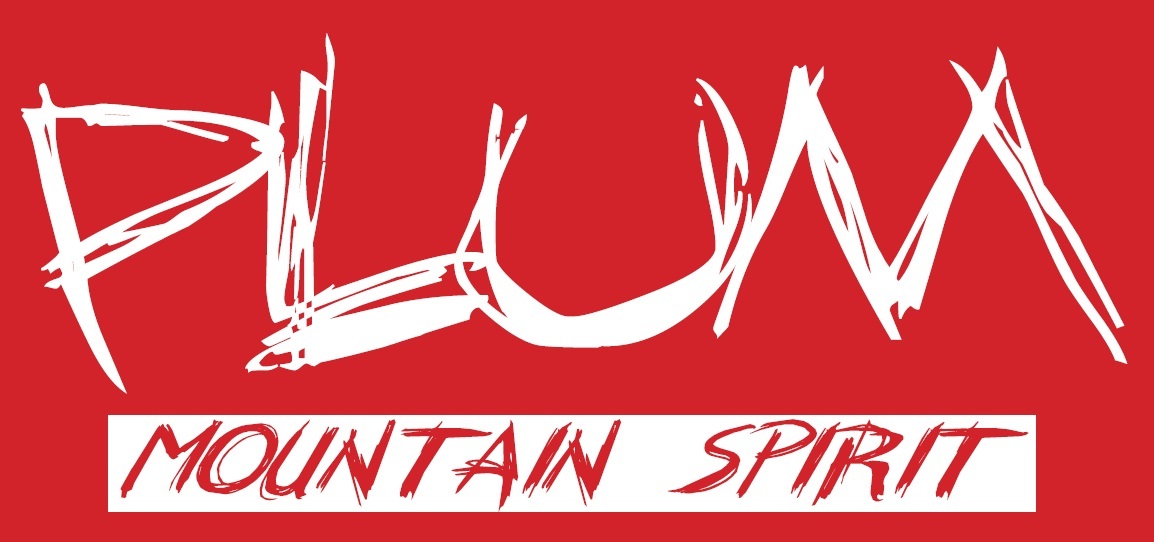Blown - Life after my ACL rupture - 4
 Monday, August 6, 2018 at 06:30PM
Monday, August 6, 2018 at 06:30PM  It’s been about 15 weeks since I had my left knee anterior cruciate ligament reconstructed with cadaver allograft. My recovery was initially steady and most observers say that I progressed more quickly than average. Truth be told, I didn’t comply completely with the typical rehabilitation time line. I did so not because I believe I’m some sort of unique snowflake but rather because the sensations I had along the way suggested to me an altered path. Pain, swelling and the return of muscle control all guide one’s progress. I adhered to these concepts without fail, testing the waters and then proceeding. The deal was that I did so two to three weeks faster than expected.
It’s been about 15 weeks since I had my left knee anterior cruciate ligament reconstructed with cadaver allograft. My recovery was initially steady and most observers say that I progressed more quickly than average. Truth be told, I didn’t comply completely with the typical rehabilitation time line. I did so not because I believe I’m some sort of unique snowflake but rather because the sensations I had along the way suggested to me an altered path. Pain, swelling and the return of muscle control all guide one’s progress. I adhered to these concepts without fail, testing the waters and then proceeding. The deal was that I did so two to three weeks faster than expected.
There are certain milestones that are commonly used to mark progress after surgery. These are based on the type of reconstruction performed along with the graft choice. In my case, since I have a cadaver graft, pain and swelling is reportedly less and that’s been the case with me. On the other hand, most investigators maintain that cadaver tissue incorporates more slowly than your own tissue so care must be taken in terms of activity choice and progression. Every surgeon has their rehab protocol based on their training and perhaps their own research into the topic and personal experience. In my own quest to understand the topic, I’ve read quite a bit and this information helps guide my choices. Additionally, I’m seeing a physical therapist informally once a week who also advises and adjusts my mostly self-directed program.
I realize that the accelerated program could cost me at some point along the way. This price could range anywhere from some additional swelling on any given day all the way to premature graft loosening or even failure. That would suck. On the other hand, by adhering strictly to the activity selection, I feel like I should be able to avoid the latter two. Time will tell.
Range of Motion
 Early on, leaning on it HARDSome surgeons recommend proceeding slowly with restoring complete range of motion (ROM), particularly full and hyper extension. Certainly, a cranky knee does not tolerate a lot of force in this regard and pain limits one’s enthusiasm. But as the dust settles after the first couple of weeks, ROM can then be addressed. Certainly, in the early period, creating a significant flexion contracture by not aggressively extending (straightening) the knee can create long term problems as things scar in and tighten. However, some surgeons feel that being too aggressive can stretch out the graft. In my research, I found that this fear is not supported by the literature on the topic. Additionally, there is a large cohort of therapists and surgeons who feel that restoring full extension, including hyperextension, as soon as possible leads to the best result long term. Consequently, I’ve spent some time pushing the extension with a variety of techniques seen here.
Early on, leaning on it HARDSome surgeons recommend proceeding slowly with restoring complete range of motion (ROM), particularly full and hyper extension. Certainly, a cranky knee does not tolerate a lot of force in this regard and pain limits one’s enthusiasm. But as the dust settles after the first couple of weeks, ROM can then be addressed. Certainly, in the early period, creating a significant flexion contracture by not aggressively extending (straightening) the knee can create long term problems as things scar in and tighten. However, some surgeons feel that being too aggressive can stretch out the graft. In my research, I found that this fear is not supported by the literature on the topic. Additionally, there is a large cohort of therapists and surgeons who feel that restoring full extension, including hyperextension, as soon as possible leads to the best result long term. Consequently, I’ve spent some time pushing the extension with a variety of techniques seen here.
 Looking for that final 5* of hyperextensionMost experts feel that full flexion (bending) can come more slowly and mine has been progressing fine with just a little bit of prodding. By 3 months post-op, I expected to have recovered all of my original ROM as is typical but I’ve failed to see that. Full hyperextension has been difficult and I’m a little suspicious that I might not see it. My therapist likes to see its restoration in the first 4-6 weeks and a review of the literature suggests the same. Aside from some persistent fluid in my knee, I don’t have much pain inhibiting me from extending. I hate to even think of it but I suspect that my graft may have been placed too tight. Graft tension at the time of surgery is one of the variables. Too tight is possible just like too loose is. Time will tell.
Looking for that final 5* of hyperextensionMost experts feel that full flexion (bending) can come more slowly and mine has been progressing fine with just a little bit of prodding. By 3 months post-op, I expected to have recovered all of my original ROM as is typical but I’ve failed to see that. Full hyperextension has been difficult and I’m a little suspicious that I might not see it. My therapist likes to see its restoration in the first 4-6 weeks and a review of the literature suggests the same. Aside from some persistent fluid in my knee, I don’t have much pain inhibiting me from extending. I hate to even think of it but I suspect that my graft may have been placed too tight. Graft tension at the time of surgery is one of the variables. Too tight is possible just like too loose is. Time will tell. Early flexion work. I'm nearly heel to ass nowThe biggest issue with my impaired extension is the delay in my return to walking normally. Gait mechanics get all screwed up at both the knee and the hip and I’ll have some work to do as time passes to restore these to normal.
Early flexion work. I'm nearly heel to ass nowThe biggest issue with my impaired extension is the delay in my return to walking normally. Gait mechanics get all screwed up at both the knee and the hip and I’ll have some work to do as time passes to restore these to normal.
The other big issue to address early on is the firing of the quadriceps, particularly the vastis medialis oblique (VMO). This is made more difficult with my lack of full extension. Any residual swelling in the knee joint, which can persist for 8 to 10 weeks, also impairs firing of this muscle. Electrical Stimulation can be used to encourage return of this important “electrical” connection. These same units seem to be popular with high level athletes, used for some sort of recovery augmentation. From what my therapist says, the VMO issue persists for many during the first year.
Activity
 The MTB has been keyAs pain and swelling have subsided, my therapist has given me numerous exercises to do. These have various goals. ROM, balance, strength and proprioception all need to be restored. Protecting the integrity of the graft is the number one precaution. My biggest victory so far as been my return to riding a bike, first in the gym and now outside. With cycling I have the tool to stop the decline in my fitness and start my return back to where I was prior to my injury. It’s an exciting process. Initially, I went too long or put too much pressure on the pedals and paid for it that evening or the next day. The good news is that with seated riding there is little stress on my graft. I can now stand pretty normally and put full pressure with no pain. I’ve even done a few Zone 4 workouts. But mostly I’m trying to restore my Zone 1-2 base and aerobic fitness. It’s coming easily.
The MTB has been keyAs pain and swelling have subsided, my therapist has given me numerous exercises to do. These have various goals. ROM, balance, strength and proprioception all need to be restored. Protecting the integrity of the graft is the number one precaution. My biggest victory so far as been my return to riding a bike, first in the gym and now outside. With cycling I have the tool to stop the decline in my fitness and start my return back to where I was prior to my injury. It’s an exciting process. Initially, I went too long or put too much pressure on the pedals and paid for it that evening or the next day. The good news is that with seated riding there is little stress on my graft. I can now stand pretty normally and put full pressure with no pain. I’ve even done a few Zone 4 workouts. But mostly I’m trying to restore my Zone 1-2 base and aerobic fitness. It’s coming easily.
I’ve been back in the weight room formally. I started with bodyweight squats and have progressed to less than body weight. I’ve been coaxing out the ROM, going deeper as pain allows. Investigators have pointed out that with squats performed with at least 30 degrees of hip flexion and keeping the plane of the knees behind my toes, there is little stress on the graft. This has to do with the fact that higher degrees of hip flexion lead to increased posterior chain activation which is protective of the ACL. I think that weights have contributed to some of the persistent swelling so I’m not doing a ton of it right now.
I’ve done weighted, walking lunges which feel super productive. I’ve done some weighted step-ups onto a bench. Last week I started some very easy two-legged jumps up onto stairs, first one step and then two. This creates an explosive moment followed by a brief decelleration which will prepare me for descending and running.
 So good to be in the AlpineI did my first real hike yesterday. Alyeska ski resort has a tram down their North face. I get a 2.2 mile hike up 2,000 feet of vertical and then a free ride down. It’s a perfect way to introduce hiking back into the schedule. Of course, I couldn’t help myself and did a second lap.
So good to be in the AlpineI did my first real hike yesterday. Alyeska ski resort has a tram down their North face. I get a 2.2 mile hike up 2,000 feet of vertical and then a free ride down. It’s a perfect way to introduce hiking back into the schedule. Of course, I couldn’t help myself and did a second lap.
Emotions
If I’m truly honest with myself, it’s hard to deny the profound emotional cost of this sort of injury and its aftermath. In the grand scheme of things, an ACL rupture and reconstruction is a pretty light weight event compared to more profound trauma experienced by others in the mountain community. Thinking about what truly broken friends have gone through and looking at their experience through the lense of my own gives me great respect for their resiliency.
I try hard to shut out most of the negative feelings that come up during the process of recovery. I haven’t always been successful. The return of pain and swelling, even if it’s just for a day or two can be incredibly disheartening. But the good days tend to out weigh the bad ones and the darker moments resolve. But I occasionally find myself mourning the loss of what could have been. I’ve been lucky during my climbing and skiing career. Sure, I’ve got a funky ankle and hip but nothing that really holds me back. But this injury and surgery portends an uncertain future. That realization is something that I must learn to cope with and put into perspective. On the other hand, as I cross certain thresholds and meet various milestones, I feel the weight of uncertainty get lighter. And then I simply step back and look at all the great athletes who have come back from the same or much worse and I feel confident that I can do the same.
 Brian |
Brian |  6 Comments |
6 Comments |  ACL reconstruction in
ACL reconstruction in  General
General 





Reader Comments (6)
I'm in the process of getting over a concussion I sustained a couple weeks ago and I feel some of the same thoughts. Injury recovery is a funny thing.
Thanks for the article, it's nice seeing some stuff that is a little more verbose than Instagram.
Thanks for reading John. I think the diminishing number of bloggers out there is a testimony to the diminishing attention spans of people, in general. I'm complicit in this trend, posting more on IG than here. But enough readers like you come through and comment on how pleasurable it is to read some detail. So, I continue to write. Better for my head anyway.
Speaking of heads, those mild brain injuries are mysterious for sure. They are super difficult to quantify and are managed mostly by symptoms. Some people feel impacted for a year or more while others are good in a few weeks. The most important thing, of course, is not to whack your noggin again anytime soon. Heal up!
Hi Brian. I also enjoy very much reading your posts, and have learned a great deal from them, as well as finding your descriptions of your adventures inspiring For example, if it wasn't for your posts about your mountain runs, I probably would never have run the "Harder Grat," a long ridge run between Interlaken and Brienz in Switzerland, that should definitely be on your bucket list, not only because of the name, but because of it's general situation and aesthetic nature--an amazing and hard (for me) trail run.
Anyway, since I injured my knee skiing last spring, I've been closely following your posts.
My MCL has healed very well, and I am now more confident that what one doctor described as a partial tear of my ACL, and another doctor said was no damage at all, was probably a relatively minor or inconsequential injury. That said, my road to recovery has been anything but easy. As soon as I got back on my feet, and started walking, doing easy ROM and balance exercises, and so on, I discovered that I had a serious ankle injury as well. The doctors didn't really believe me, and it took several weeks, until my ankle injury developed into a serious posterior ankle impingement, for them to order an MRI, whereupon, lo and behold, I had ankle ligament and bone bruising from my ski injury. Not what you might expect, but what I sustained. Apparently, when your ankle dorsal flexion is reduced, you have a much greater chance of developing patellar tendonosis, and so I did. Now, after two cortisone injections (ankle and knee joint, not patellar tendon) and regimes of physical therapy, the ankle impingement is gone, but the patellar tendonosis remains, and it seems as if it will be stubborn and persistent. I can't run, bike, swim, and so on. I have decided to concentrate, instead, on making my upper body stronger than it ever has been. My lower body exercise consists of eccentric squats on a decline board for my patellar tendon, and stretching and massage. The biggest challenge is cardio--what can I do? Yesterday, I walked for 15 minutes on a flat trail. Ha! You have to start somewhere. I am both hopeful and disheartened.
What do you know about extracoprporeal shockwave therapy for tendon treatment. Gimmick or real? My first suspicion was the former, but it seems like it might actually work.
Hang in there, and I'm sure I'm going to read about your ski adventures and runs in the future.
Hey Bruno,
Thanks for the props. Damn, your round of trauma sounds like a beat down. MRIs can "over read" the degree of damage to various structures, hence terms like "partial ACL tear" and things like that. Once the inflammation and swelling around these structures subsides after 3-4 months the smoke clears and they go back to looking normal.
Same for your ankle. The bone bruise was likely the big culprit. Those hurt and linger for months. The patellar tendon issue is a stubborn player. It's often called "jumper's knee". Common in explosive athletes. I had it when I was younger, in my 20's, when I took up tele skiing and had a season pass. It was so bad I could not climb a flight of stairs but once it warmed up I could still ski. I did. It eventually just went away.
I'm no fan of steroid injections. They degrade tissue without a doubt. It's like turning off your fire alarm while your house still burns. You're likely onto the right track with the eccentrics. You can try dry needling, electro acupuncture and any other modality that stimulates healing. Light exercise is key so that the genes that make a tendon a tendon remain expressed. The shock wave stuff might help too. It was popular for plantar fasciitis for awhile. Be wary of so-called "stem cell" injections and PRP. Not a lot of good evidence for their use. They simply make the provider a bunch of money since insurance companies don't pay for it.
I got a Concept 2 Ski Erg to keep busy. Great machine. You can go easy on the lower extremities while still hitting the rest of your body. Plus, you'll be wicked on long flat skinners next season.
I think likely you will simply follow a course of gradual return to function. Continue to probe your tolerance of various loads on your knee and push the boat out from shore further and further. It will happen almost imperceptibly. Keep me posted.
Hi Brian, love your site, and really appreciate the effort you put into it. Hope your recovery is going well. As a Tele skier (even on Skimo) can I suggest you consider getting back into some Tele skiing, totally subject I admit, but ido feel that the increased movement both strengthens and protect your knees. If you can try out some of the latest Tele kit, it has come a long way, though lightweight boots are still a, perhaps, distant dream.
Hey Mark,
Thanks for reading and chiming in. I appreciate the thoughts.
My girlfriend thought you were trolling me with the tele recommendation because she has heard my rants for years. I'd describe myself as a recovering tele-evangelist. I first dropped a knee around 1978 and grew up through all the equipment advances until about 2001 when I finally called uncle. The weight, complexity and restriction of the modern gear has no interest for me as I fall on the exact opposite of the spectrum these days. I do agree with you that telemark skiing requires significantly more leg strength than Alpine turns. The fact that the heel is free may have a slight protective effect for the knee, as well. But the turn really has no place at the table when it comes to steep skiing in variable conditions for all but the most skilled practitioner. And as a skier looking 60 in the face, my body simply is not up to the task. I'm resigned to building my leg strength in the weight room. Cheers